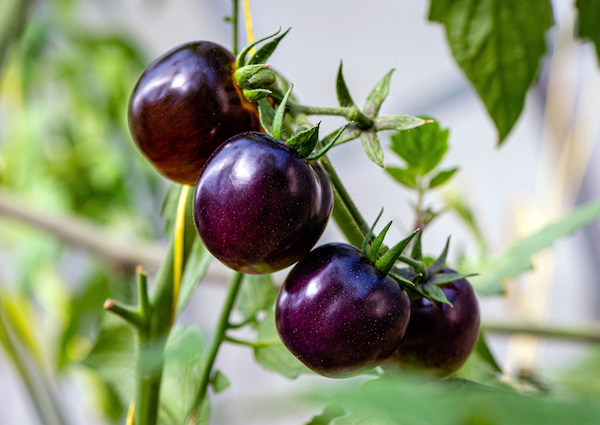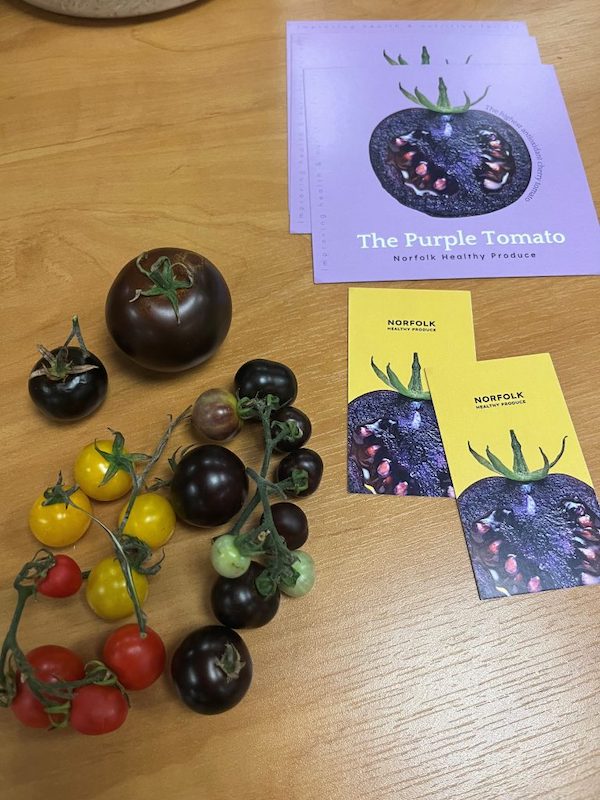Home gardeners have a new tomato variety available this year that is sure to stand out, named simply the “Purple Tomato.” The name gives away what makes the new fruit from Norfolk Plant Sciences so special. Purple Tomatoes are indeed purple, through and through, and this year, it became the first genetically modified food crop marketed directly to consumers.
Developed by Norfolk Plant Sciences founder, Professor Cathie Martin, the purple tomato derives its color from two genes sourced from the edible snapdragon flower. The compounds responsible for giving purple coloration to flowers, produce, and other plants are known as “anthocyanin,” bioactive compounds that have a number of unique health benefits associated with them.
Though some people may have come across a purple tomato here and there, be it in a store or a garden, after biting into it, they will notice that those tomatoes are still red, said Norfolk CEO Dr. Nathan Pumplin. That’s not the case for Purple Tomatoes, which have a deep purple flesh and even purple seeds. Purple Tomatoes have, per weight, as much anthocyanin as a blueberry or eggplant, Pumplin says. And Americans eat more tomatoes annually, so it makes the nutritional benefits more accessible.
The Purple Tomato is part of a recent wave of GM crops that are “biofortified,” meaning they are bred to increase their nutritional value. This is unlike GMO staple crops such as corn and soybeans, which are primarily developed to be easier to grow. That includes being modified to tolerate herbicides and other chemicals, a main point of contention among GMO opponents.
Norfolk’s Purple Tomato is hardly the first biofortified plant. Most famously, Golden rice was developed in the late 1990s to have more beta-carotene to combat Vitamin A deficiencies. However, critics of genetically engineered crops immediately raised various concerns, including claims that golden rice poses risk to the health of consumers and to the environment. Resulting regulatory issues are blamed for the rice never being widely adopted and potentially saving the lives of over 100,000 children world wide that are estimated to die from Vitamin A deficiencies every year.
While farmers and others in the ag world have unsuccessfully battled those and other misconceptions for decades, the Purple Tomato’s creators hope its release to gardeners could change the conversation. “We aim to show with this product and with this company that there’s a lot of benefits that can go to consumers through biotechnology, better taste, better nutrition as prime examples,” says Pumplin. And until now, GM foods were generally only available to commercial growers.
You can buy Norfolk’s Purple Tomato seeds online HERE. Purple Tomatoes are also now available at select grocery stores, so be on the lookout!








